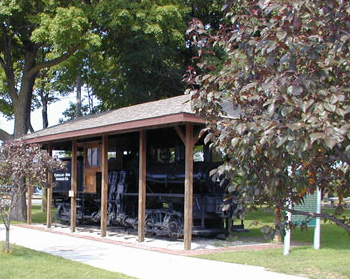 |
| The Charter Township of Haring is located north of Cadillac Michigan in Wexford County. The Township Offices are located at 515 Bell Ave. next to the fire station. This is the polling location where all voting is done in the township. The Shay Locomotive, first built in Haring Township, is on display in Cadillac City Park. Office hours are from 9 a.m.-1.pm. Mon.-Fri. |
Charter
Township of Haring
515 Bell Ave
Cadillac, MI 49601
Phone 231-775-8822
Fax 231-775-8830
Election Commission Meeting
May 14, 2025
Absentee ballots are available per request, by phone or by email. No reason is necessary. If you are a permanent AV you will receive your application automatically about 30 to 45 days prior to each election. If you are not sure you are on the permanent AV list, please contact the clerks office at 231-775-8822
ext. 3 or email request at clerk@twpofharing.org
Call clerks office at 231-775-8822. ext. 3
To check your own voters registration go to:
https://mvic.sos.state.mi.us/
Charter Township of Haring
2025
Meeting Dates
The Charter Township of Haring will meet at 6:00 P.M. on the second Monday of
each month. The regular board meeting days for 2024 are as follows:
January 13, 2025 April 14, 2025 July 14 2025 October 13, 2025
February 10, 2025 May 12, 2025 August 11, 2025 November 10, 2025
March 10, 2025 June 9, 2025 September 8, 2025 December 8, 2025
The Charter Township of Haring Planning Commission will meet at 6:00 P.M. on
The Tuesday following the regular board meeting of each month.
January 14 2025 April 15 2025 July 15 2025 October 14, 2025
February 11, 2025 May 13, 2025 August 12, 2025 November 11, 2025
March 11, 2025 June 10, 2025 September 9, 2025 December 9, 2025
The Charter Township Board of Review will meet the following dates:
Organizational Meeting March 4, 2025 1:00P.M.
Wednesday March 12, 2025 3:00 PM. to 9:00 PM.
Thursday March 13, 2025 9:00 AM. to 3:00 PM
Monday March 17, 2025 (If Needed) * 9:00 AM
The Township Hall will also be closed for the following Holidays:
Wednesday January 1, 2025 New Year’s Day
Monday May 26, 2025 Memorial Day
Friday July 4, 2025 Independence Day
Monday September 1, 2025 Labor Day
Tuesday November 11, 2025 Veterans Day
Thursday November 27, 2025 Thanksgiving Day
Friday November 28, 2025 Day after Thanksgiving
Thursday December 25, 2025 Christmas Day